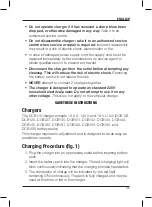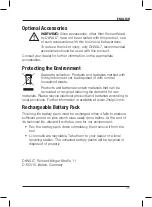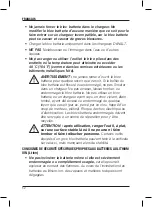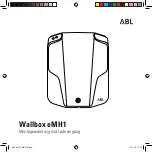
ENGLISH
38
damaged in any way (i.e., pierced with a nail, hit with a
hammer, stepped on). Electric shock or electrocution may
result. Damaged battery packs should be returned to
service centre for recycling.
CAUTION: When not in use, place tool on its side on
a stable surface where it will not cause a tripping
or falling hazard.
Some tools with large battery packs
will stand upright on the battery pack but may be easily
knocked over.
SPECIFIC SAFETY INSTRUCTIONS FOR LITHIUM ION (Li-Ion)
• Do not incinerate the battery pack even if it is severely
damaged or is completely worn out.
The battery pack can
explode in a fire. Toxic fumes and materials are created when
lithium ion battery packs are burned.
• If battery contents come into contact with the skin,
immediately wash area with mild soap and water.
If battery
liquid gets into the eye, rinse water over the open eye for
15 minutes or until irritation ceases. If medical attention is needed,
the battery electrolyte is composed of a mixture of liquid organic
carbonates and lithium salts.
• Contents of opened battery cells may cause respiratory
irritation.
Provide fresh air. If symptoms persists, seek medical
attention.
WARNING:
Burn hazard. Battery liquid may be flammable
if exposed to spark or flame.
Transportation
D
e
WALT
batteries comply with all applicable shipping regulations
as prescribed by industry and legal standards which include UN
Recommendations on the Transport of Dangerous Goods; International
Air Transport Association (IATA) Dangerous Goods Regulations,
International Maritime Dangerous Goods (IMDG) Regulations, and
the European Agreement Concerning The International Carriage of
Dangerous Goods by Road (ADR). Lithium-ion cells and batteries
have been tested to section 38.3 of the UN Recommendations on the
Transport of Dangerous Goods Manual of Tests and Criteria.
Содержание DCB115 Series
Страница 1: ...DCB115 FINAL PRINT SIZE 105mm x 148mm ...
Страница 3: ...1 Figure 1 a ...
Страница 106: ......
Страница 107: ......
















































